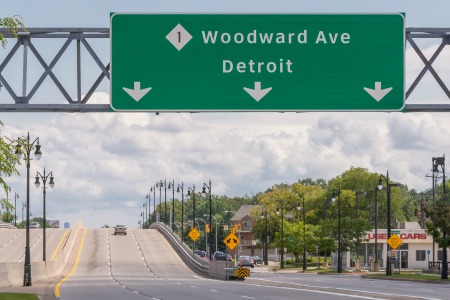 In August 2014, metro Detroit was drenched with two days of steady rainfall, resulting in flooded streets, freeways and homes.
In August 2014, metro Detroit was drenched with two days of steady rainfall, resulting in flooded streets, freeways and homes.
The basement of Owen Pierce’s Detroit home flooded. The junior civil engineering major also had a family friend who was stranded for hours after driving through standing water.
Pierce, a McNair Scholar, wondered how this could happen in a modern city with a drainage system in place.
That question turned into a research project he submitted to the Undergraduate Research and Creative Projects Conference in November, under the guidance of faculty mentor Michael Howard Schrader.
Pierce’s research found the flooding was primarily due to the abundance of impervious surfaces in the city. His hypothesis was that replacing some concrete with grass could significantly reduce the chances of flooding.
To test his theory, Pierce analyzed the impact of replacing a half-mile stretch of pavement in the center lane of Grand River Avenue with grass. He measured the center lane at 12 feet wide and then calculated the runoff rate for the center lane, first as pavement and then as grass.
Pierce determined that 1,189,296 gallons of storm water could be saved in a day along that half-mile stretch with a surface that soaked up rain rather than an impervious one.
“I knew that grass would make a difference, but I didn’t expect the amount to be as big as it is,” said Pierce.
Curious to see what the broader impact could be, Pierce looked at the other major arterials in Detroit: Gratiot Avenue, Michigan Avenue, Fort Street, Jefferson Avenue, Van Dyke Avenue and Woodward Avenue. On average, these roads each have about six miles open for installing grass medians in their center lanes.
If that were done, Pierce calculates 101,090,160 gallons of storm water per day could be saved from entering the sewer system. That’s approximately 6 percent of the water allowed through Detroit's primary water treatment plant.
“Just making a small change to the center lanes of seven major roads in Detroit can have a significant impact,” said Pierce. “I want to share these findings with Detroit city leaders.”
Pierce received one of six awards for poster presentations at the Undergraduate Research and Creative Projects Conference.
Students interested in learning more about undergraduate research opportunities should visit http://urop.wayne.edu/.
